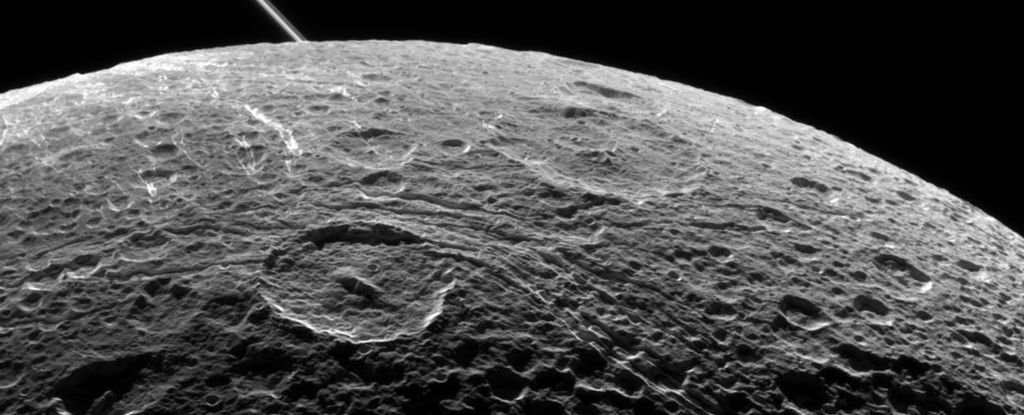Plenty of plans: the Chinese plan to send probes to the dark side of the moon, Mars and Jupiter until 2030

Source: NASA / JPL-Caltech / Space Science Institute
The space program of China is developing very actively. The Chinese have already sent probes to the Moon three times, collecting information about the Earth’s natural satellite. The interest in the moon is understandable - the fact is that China regards it as a source of the helium isotope rare on Earth, helium-3 , which can be used to conduct a “pure” thermonuclear reaction. It is estimated that 0.02 grams of helium-3 gives off energy during a thermonuclear reaction as much as it is released when a barrel of oil is completely burned. Only 40 tons of helium-3 should be enough to provide the US with energy for a year.
Chinese are interested in and Mars. Last year, they said, and now confirmed their intention to send their own rover to the red planet. It should happen by 2020. The prototype of the rover has already been shown at the international aerospace exhibition in Zhuhai. After some time, China plans to send another mission to Mars. In addition, PRC experts are also planning to launch a probe to Jupiter.
The project to launch a rover to Mars was approved by the Chinese government in January. According to one of the leaders of the country's space program, Wu Yanhua, the project has progressed significantly since then. According to the plan, the Martian apparatus will have to study the soil, the atmosphere on Mars, look for signs of water availability in the region of residence. “Now we have completed a general plan and have begun to develop the necessary equipment for the rover,” said Yanhua.
')
The first device, which will be sent to Mars by Chinese scientists, will consist of three components. This is an orbiter, a landing platform and the rover itself. The mass of the rover will be about 200 kg. The device will include 13 scientific instruments. The planned duration of the apparatus on Mars is 92 days. Flight time to Mars will be about 7 months.

The possible appearance of the rover, which is now being developed by the Chinese
After this launch project, the Chinese are going to launch another rover to Mars, already larger. He will have to collect rock samples from the surface and the layers adjacent to the surface. The main purpose of visiting Mars, according to representatives of the Chinese space agency, is to conduct research that will help answer questions about the origin and evolution of the solar system and the search for extraterrestrial life.
By 2030, the probe will be sent to Jupiter, to study the giant planet and its moons. But even before the end of 2017, China will send to the Moon an automatic system Chang'e 5 for collecting samples of lunar rocks. In 2018, another mission will be realized , the main task of which is a soft landing on the reverse side of the moon. If the Chinese succeed in accomplishing this, they will become the first nation who managed to land the device on the side of its natural satellite invisible from Earth.
Despite the fact that, in general, everything is going smoothly with the Chinese, there are also annoying technical problems. For example, in March of this year, some Chinese media reported a loss of communication with Tiangong-1. "Tyangun-1" (Chinese control unit 天宫 一号 or "Palace of Heaven - 1") is the first Chinese spacecraft of the orbital station class, created by the "Project 921-2", referred to as the target module and designed to work out convergence technologies and docking spacecraft. The Tyangun-1 became the first non-Soviet and non-American free-flying manned orbital station, smaller in size, but similar in function to the Soviet orbital stations of the first generation Salyut and Almaz. Now there is no connection with the station, it should enter the dense layers of the earth’s atmosphere at the end of the second half of 2017.
Also, Chinese experts are considering the possibility of sending a man to the moon by 2020, plus sending a probe to one of the three most dangerous asteroids for the earth. Of course, everything comes down to money - the space industry is very expensive for the governments of their countries (by the way, it is worth remembering the ultra-economical Indian Martian probe, the price of which is $ 75 million many times lower than similar projects in other countries). If there is sufficient funding from the government - China will be able to complete the tasks and beyond the plan. But, most likely, the money will go to the implementation of the Martian program, after the completion of the lunar cycle of projects. Plus, as mentioned above, it is planned to send a probe to Jupiter.
Source: https://habr.com/ru/post/400293/
All Articles